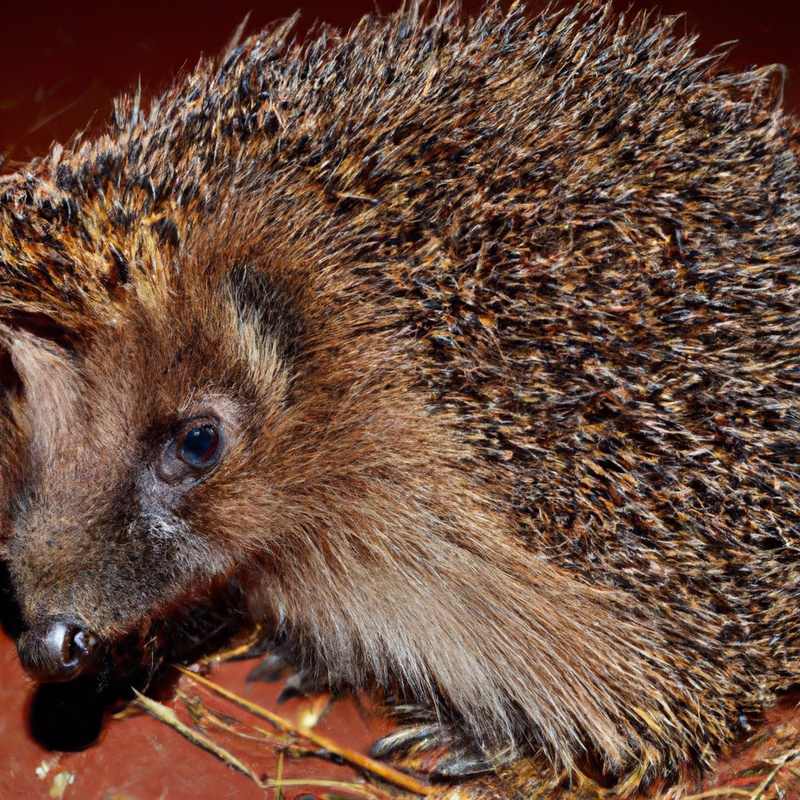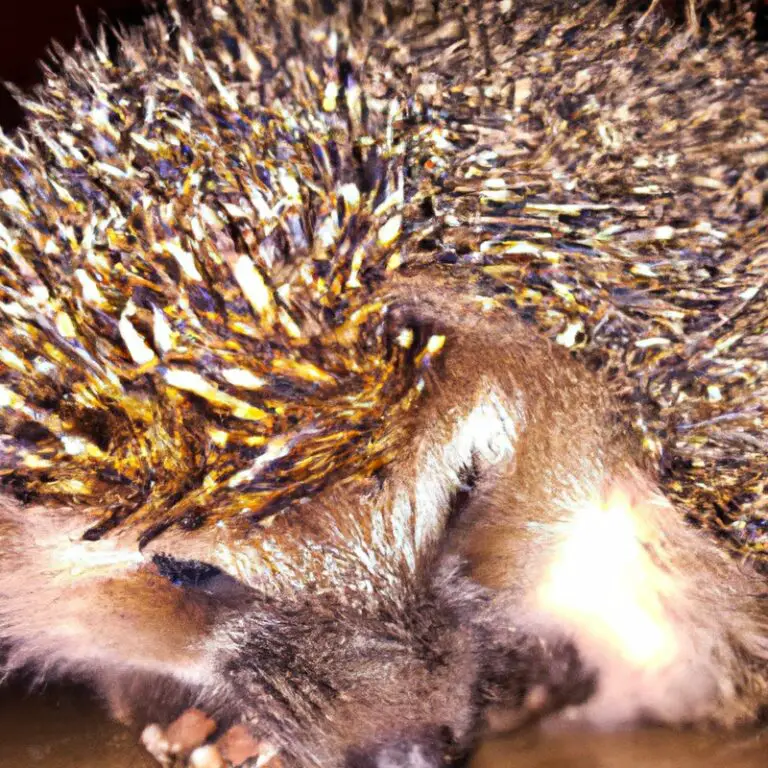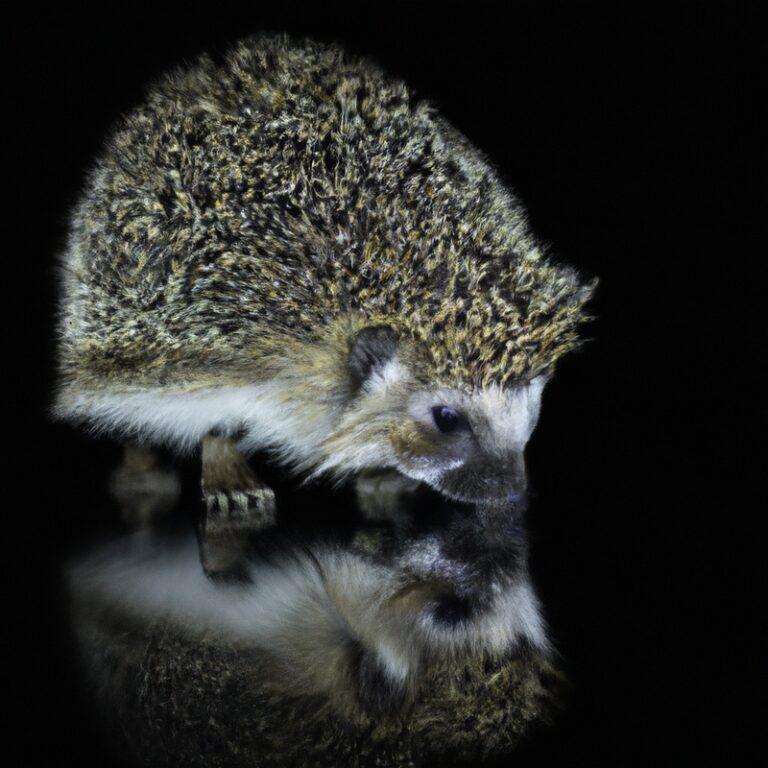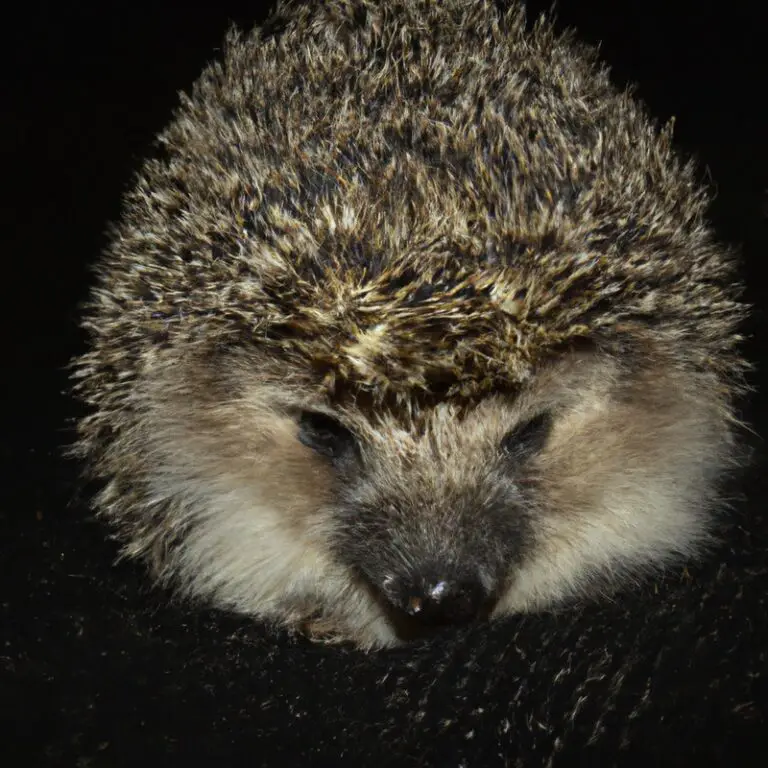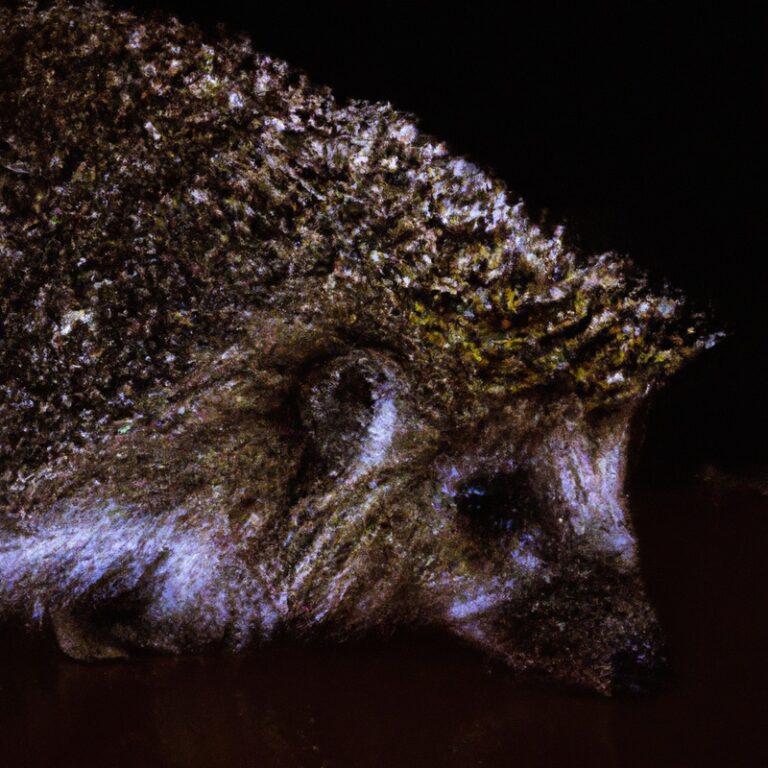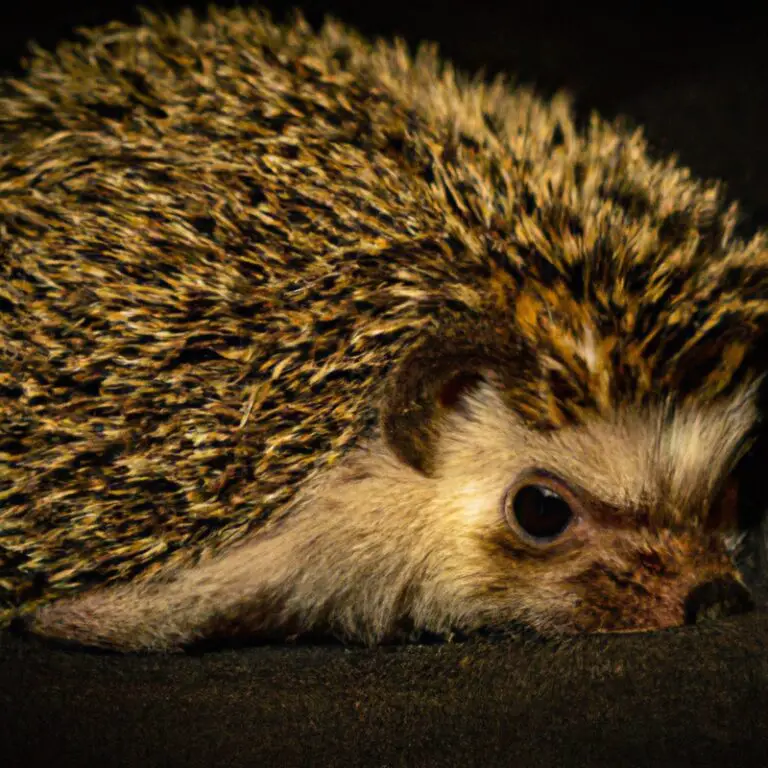What Is The Connection Between Hedgehogs And Conservation Efforts?
Key Takeaways:
- Hedgehogs play a vital role in maintaining ecosystem balance and promoting biodiversity.
- Conservation efforts focused on hedgehogs can have positive cascading effects on other wildlife populations.
- Providing suitable habitats and reducing urbanization can help hedgehog populations thrive.
- Community engagement and education are crucial for successful hedgehog conservation initiatives.
Have you ever stopped to consider the connection between adorable hedgehogs and important conservation efforts?
It turns out these spiky little creatures play a vital role in preserving our wildlife and ecosystems.
In this article, we’ll dive into the fascinating world of hedgehogs, exploring their characteristics, threats they face, and how they serve as indicator species for conservation.
We’ll also discuss the impact of hedgehog decline on biodiversity and delve into the various conservation efforts being undertaken to protect these prickly ambassadors.
So, buckle up and get ready to discover the surprising link between hedgehogs and the wider world of conservation!
| Connection between Hedgehogs and Conservation Efforts | |
| Hedgehogs | Conservation Efforts |
| Hedgehogs are small, spiky mammals | Conservation efforts aim to protect and preserve biodiversity |
| Hedgehogs play an important role in ecosystems | Conservation efforts recognize hedgehogs’ ecological significance |
| Hedgehogs are considered key bioindicators | Conservation efforts monitor hedgehog populations as an indicator of ecosystem health |
| Hedgehog populations are declining globally | Conservation efforts focus on protecting and restoring hedgehog habitats |
| Hedgehogs require access to suitable habitats and food sources | Conservation efforts involve creating wildlife corridors and urban green spaces |
| Hedgehogs are vulnerable to habitat loss, climate change, and human activities | Conservation efforts address these threats through education and awareness campaigns |
| Hedgehogs are protected by laws in some countries | Conservation efforts advocate for legal protection and enforce anti-poaching measures |
The Importance of Conservation Efforts
Conservation efforts play a vital role in protecting and preserving wildlife.
Why Conservation Efforts are Essential for Wildlife
Conservation efforts are essential for wildlife because they help protect and preserve various species and their habitats. Wildlife conservation plays a key role in maintaining biodiversity and ecological balance in ecosystems.
It ensures the survival of endangered species, prevents the loss of genetic diversity, and promotes the sustainability of ecosystems.
Conservation efforts also contribute to the overall health of the planet and its ecosystems, benefiting not only wildlife but also humans.
The Impact of Human Activities on Wildlife Population
Human activities have a significant impact on wildlife populations around the world. Our actions, such as habitat destruction, pollution, and overexploitation, have led to a decline in many species.
Deforestation, for example, destroys habitats and disrupts ecosystems, threatening the survival of countless plants and animals.
Pollution, including chemical runoff, affects water quality and can harm aquatic species. Overhunting and overfishing have depleted populations and disrupted food chains.
It is crucial that we take steps to minimize these impacts and conserve wildlife for future generations.
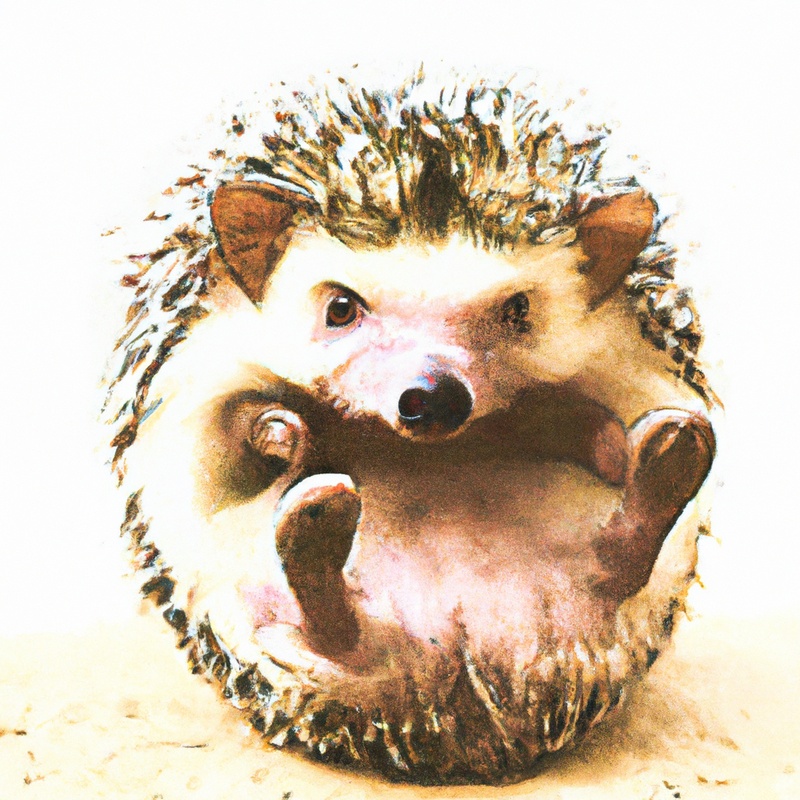
Examples of Conservation Efforts and Their Success
Conservation efforts have shown success in protecting various species and their habitats.
For example, the reintroduction of captive-bred California condors into the wild has increased their population from 27 individuals to over 400.
Another triumph is the recovery of the grey wolf in Yellowstone National Park, where careful management has led to an increase in their numbers.
Additionally, conservation measures like the establishment of marine protected areas have played a key role in preserving fragile marine ecosystems and allowing fish populations to recover.
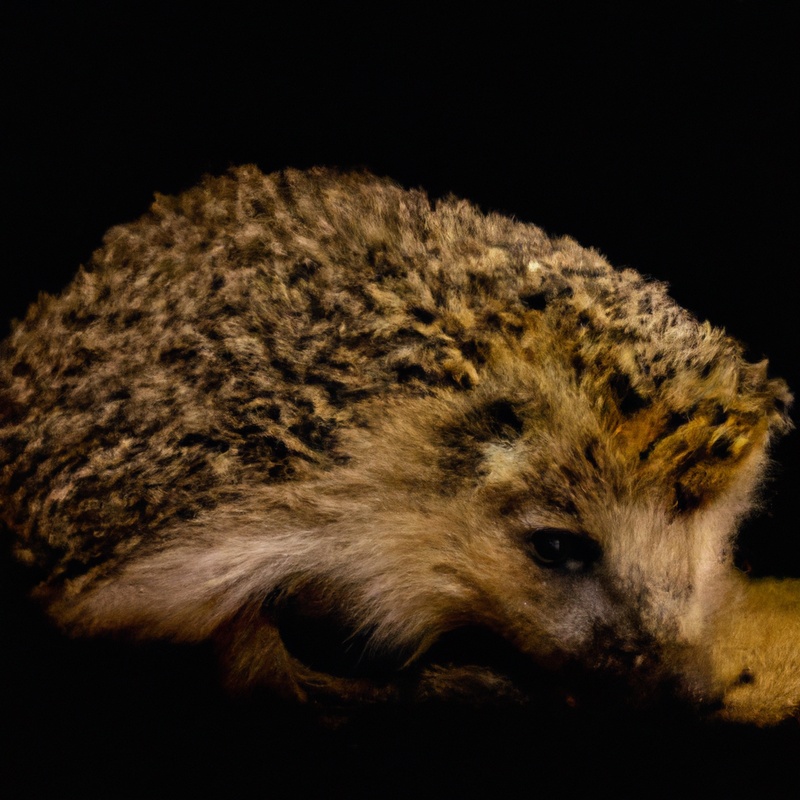
Introducing Hedgehogs
Hedgehogs are fascinating creatures known for their spiky exteriors and nocturnal lifestyle.
Let’s delve into their unique characteristics and behavior.
Characteristics and Behavior of Hedgehogs
Hedgehogs are small, spiky mammals known for their distinct appearance and adorable nature. They have a round body covered in sharp spines, which serve as their defense mechanism.
Hedgehogs are mainly nocturnal, active during the night, and they are solitary creatures.
They tend to hibernate during the winter months to conserve energy. Hedgehogs are primarily insectivores, but they sometimes eat small amounts of fruits, vegetables, and even carrion.
They use their excellent sense of smell and hearing to find their food.
Hedgehogs are expert climbers and swimmers, and they make their homes in burrows, under bushes, or in piles of leaves. These fascinating creatures are a valuable part of our ecosystem and contribute to natural pest control by feeding on insects.
Habitat and Distribution of Hedgehogs
Hedgehogs are found in a variety of habitats, including forests, grasslands, and gardens. They have a wide distribution across Europe, Asia, and Africa.
Hedgehogs are adaptable and can survive in urban areas as well.
They prefer areas with plenty of vegetation and hideouts like shrubs, hedges, and log piles. Their distribution is influenced by factors such as food availability and the presence of suitable nesting sites.
Hedgehogs are known for their ability to thrive in diverse environments, making them a fascinating and important part of global biodiversity.
Threats Faced by Hedgehog Population
The hedgehog population is facing several threats that are impacting their numbers. These include habitat destruction due to urbanization and agricultural activities.
Additionally, the use of pesticides and chemicals in gardens and farmlands is detrimental to their survival.
Road accidents are also a significant cause of hedgehog mortality. Furthermore, the decline in insect populations, which hedgehogs depend on for food, poses a threat to their survival.
It is vital that we address these threats and take action to conserve the hedgehog population.
Hedgehogs as Indicator Species
Hedgehogs play a key role as indicator species in conservation efforts.
What are Indicator Species and Their Role in Conservation
Indicator species are species whose health and abundance provide insight into the overall health of an ecosystem.
They can indicate the presence of certain environmental conditions or the success of conservation efforts.
By monitoring their populations, scientists can gain valuable information about habitat quality, pollution levels, and overall biodiversity.
Their role in conservation is crucial as they help identify areas that require protection or restoration, guide habitat management strategies, and assess the effectiveness of conservation initiatives.
Protecting and conserving indicator species is vital for maintaining the balance and sustainability of ecosystems.
How Hedgehogs Serve as Indicator Species
Hedgehogs serve as indicator species because their presence or absence can provide valuable information about the health of an ecosystem.
Their decline in population can be indicative of habitat loss, pollution, or changes in food availability.
By monitoring hedgehog populations, conservationists can gain insights into broader environmental issues and take action to protect these unique creatures and their habitats.
Additionally, hedgehogs are nocturnal and occupy various habitats, making them particularly effective indicators of biodiversity in urban areas.
Monitoring Hedgehog Population for Conservation Purposes
To monitor hedgehog populations for conservation purposes, field surveys and camera trapping are commonly used methods. These help gather data on population size, distribution, and habitat preferences.
Experts also rely on citizen science initiatives where people can report hedgehog sightings.
By monitoring population trends, researchers can identify areas where intervention is needed, such as habitat restoration or the implementation of wildlife-friendly practices. This monitoring is crucial for ensuring the long-term survival of hedgehog populations and contributing to broader conservation efforts.
Hedgehogs and Biodiversity
Hedgehogs play an important role in maintaining biodiversity.
Maintaining a healthy hedgehog population is crucial for the preservation of biodiversity.
Hedgehogs’ Role in Ecosystems
Hedgehogs play an important role in ecosystems.
They contribute to biodiversity by feeding on insects that can be harmful to plant life.
In turn, hedgehogs help to balance populations of certain species and promote a healthier ecosystem.
Additionally, their droppings act as fertilizer, aiding in plant growth.
By supporting hedgehog populations, we can help maintain the delicate balance of our natural environment.
Impact of Hedgehog Decline on Biodiversity
The decline of hedgehogs can have a significant impact on biodiversity.
Hedgehogs play a vital role in ecosystems as they help control populations of insects and other invertebrates.
Without hedgehogs, these populations can increase, leading to imbalances in the ecosystem.
Additionally, hedgehogs also contribute to seed dispersal, helping to maintain plant diversity.
Their decline can disrupt this process, affecting the overall health and diversity of the ecosystem.
Therefore, it is important to take measures to conserve and protect hedgehog populations to safeguard biodiversity.
Restoring Hedgehog Population for Biodiversity Conservation
Restoring hedgehog populations is vital for biodiversity conservation.
Hedgehogs contribute to the ecosystem by controlling pest populations.
They feed on insects, slugs, and snails, which helps to keep their numbers in check.
In turn, this prevents these creatures from causing damage to plants and crops.
Additionally, hedgehogs are an important food source for predators such as birds and foxes.
By restoring their population, we can maintain a healthy balance in the ecosystem and protect overall biodiversity.
Conservation Efforts for Hedgehogs
To help protect hedgehogs, there are several conservation efforts in place.
Hedgehog Rescue and Rehabilitation Centers
Hedgehog Rescue and Rehabilitation Centers are dedicated facilities that provide care for injured or orphaned hedgehogs.
They play a vital role in saving and rehabilitating these animals, allowing them to be released back into the wild.
These centers provide expert medical treatment, nourishment, and a safe environment for hedgehogs to recover.
They also educate the public about the importance of hedgehog conservation and how to help protect these unique creatures.
Overall, these centers contribute significantly to the conservation efforts of hedgehogs and ensure their survival for future generations.
Creating Hedgehog-Friendly Gardens and Habitats
Creating hedgehog-friendly gardens and habitats is essential for their survival. Here are a few practical tips to do so:
- Provide shelter: Leave areas in your garden where hedgehogs can build their nests, such as log piles or dense shrubs. Avoid using chemicals or pesticides that can harm hedgehogs.
- Create hedgehog highways: Install small holes or gaps in fences and walls to allow hedgehogs to roam freely between gardens in search of food and mates.
- Supply food and water: Leave out shallow dishes of fresh water and provide hedgehog-friendly food, such as wet cat or dog food, or specialized hedgehog food.
- Avoid hazards: Ensure your garden is hedgehog-safe by removing any potential hazards, such as garden netting, open drains, or deep ponds that hedgehogs can fall into.
By making these small changes, you can make a big difference in supporting hedgehog populations and helping them thrive in their natural habitats.
Educating the Public about Hedgehog Conservation
To educate the public about hedgehog conservation, it is important to raise awareness about the threats these adorable creatures face and the actions we can take to protect them.
Here are some ways to educate the public:
- Spread the word through social media: Share information, articles, and cute hedgehog pictures on your platforms to reach a wider audience.
- Organize awareness campaigns: Host workshops, presentations, or educational events where experts can discuss the importance of hedgehog conservation.
- Collaborate with schools and community organizations: Work with local schools and organizations to include hedgehog conservation topics in their curriculum or organize educational field trips.
- Provide information online: Create a dedicated webpage or a blog where people can learn about hedgehogs, their habitats, and the actions they can take to conserve them.
- Encourage citizen science initiatives: Involve the public in hedgehog monitoring projects, allowing them to contribute to conservation efforts and collect valuable data.
Remember, educating the public is crucial for creating a widespread understanding of the importance of hedgehog conservation and inspiring people to take action on behalf of these wonderful creatures.
The Connection Between Hedgehogs and Overall Conservation Efforts
Hedgehog conservation plays a vital role in overall conservation efforts worldwide.
Hedgehogs as Ambassadors for Conservation
Hedgehogs can play a crucial role as ambassadors for conservation efforts.
These adorable creatures capture people’s attention and raise awareness about the importance of protecting wildlife habitats.
By showcasing hedgehogs as charismatic species, conservation organizations can engage the public in active participation, fundraising, and volunteerism.
These efforts not only benefit hedgehog populations but also contribute to the overall conservation of ecosystems and biodiversity.
Hedgehogs can be powerful ambassadors for inspiring positive change and promoting environmental stewardship.
How Hedgehog Conservation Supports Wider Biodiversity Conservation
Hedgehog conservation plays a vital role in supporting wider biodiversity conservation. By protecting hedgehogs and their habitats, we create a ripple effect that benefits other species as well.
Hedgehogs act as important indicators of a healthy ecosystem, and taking steps to preserve their populations helps to maintain the overall balance of species diversity.
Additionally, the efforts made to conserve hedgehogs, such as creating wildlife-friendly gardens and reducing pesticide use, also benefit other wildlife like birds, insects, and small mammals. So, by focusing on hedgehog conservation, we are indirectly supporting the conservation of a much wider range of species.
Collaboration between Hedgehog Conservation Organizations and Environmental Groups
Collaboration between hedgehog conservation organizations and environmental groups is essential for the effective conservation of hedgehog populations and their habitats. These partnerships allow for the exchange of knowledge, resources, and expertise to address the various challenges that hedgehogs face, such as habitat loss and fragmentation, pollution, and climate change.
They also promote coordinated efforts in research, monitoring, and public education, which are crucial for raising awareness and implementing effective conservation measures.
Through collaboration, these organizations can work together towards a common goal of safeguarding hedgehogs and their ecosystems.
Frequently Asked Questions (FAQs)
How Can I Help Hedgehog Conservation Efforts?
To help hedgehog conservation efforts, you can:
- Create a hedgehog-friendly garden by providing food, water, and shelter. Avoid using pesticides and chemicals.
- Install hedgehog highways in your fences or walls to allow them to roam freely between gardens.
- Educate others about hedgehogs and their importance in the ecosystem.
- Report sightings and contribute to citizen science projects to help researchers track hedgehog populations.
- Support local wildlife organizations and donate to hedgehog rescue centers. Every little bit helps!
Are Hedgehogs Endangered?
Hedgehogs are indeed facing endangered status in many parts of the world.
This is due to a combination of factors including loss of habitat, vehicular accidents, and the use of pesticides that reduce their prey availability.
Additionally, hedgehogs are also vulnerable to predation by non-native species.
This decline in hedgehog populations has prompted conservation efforts to protect their habitats, create safe wildlife corridors, and raise awareness about their importance in the ecosystem.
It’s important for individuals and communities to take action to support hedgehog conservation to ensure their survival for future generations.
What are the Main Threats to Hedgehogs?
Hedgehogs face several main threats to their survival and well-being.
These include:
- Habitat loss: The destruction and fragmentation of natural habitats, such as woodland and hedgerows, reduce the available space and resources for hedgehogs.
- Urbanization: Increasing urban development leads to loss of green spaces and the proliferation of roads, which pose significant risks for hedgehogs during their nocturnal wanderings.
- Pesticides and chemicals: Exposure to pesticides, slug pellets, and other chemicals can be harmful to hedgehogs, affecting their food sources and overall health.
- Predators: Natural predators, such as foxes and badgers, can pose a threat to hedgehogs, especially when their populations are high.
- Road traffic: Hedgehogs are frequently killed or injured by vehicles as they cross roads in search of food or mates.
These threats, combined with others like climate change and human interference, highlight the need for conservation efforts to protect hedgehogs and their habitats.
Can I Keep a Hedgehog as a Pet?
Yes, you can keep a hedgehog as a pet.
Hedgehogs can make adorable and unique pets, but they do require special care.
Here are some things to consider before getting a hedgehog:
- Research: Learn about their needs, behavior, and proper care before bringing a hedgehog home.
- Environment: Provide a spacious cage with hiding spots, a wheel for exercise, and a warm, comfortable temperature.
- Diet: Feed them a balanced diet of commercial hedgehog food, supplemented with insects and occasional fruits or vegetables.
- Handling: Handle them gently and introduce them to human interaction gradually to avoid stress.
- Veterinary care: Find a veterinarian who has experience with hedgehogs for regular check-ups and any medical needs.
Remember, hedgehogs can live for several years, so be prepared for a long-term commitment.
Providing a safe and suitable environment is essential for their well-being.
Final Verdict
Hedgehogs play a vital role in conservation efforts.
As indicator species, they help monitor the health of ecosystems and biodiversity.
The decline of hedgehog populations highlights the impact of human activities on wildlife.
Through conservation efforts such as rescue centers, creating hedgehog-friendly habitats, and public education, we can make a difference.
Hedgehogs serve as ambassadors for conservation, promoting awareness and collaboration.
By protecting hedgehogs, we are supporting wider biodiversity conservation efforts.
Let’s take action to safeguard these spiky friends and ensure a thriving natural world for generations to come.

